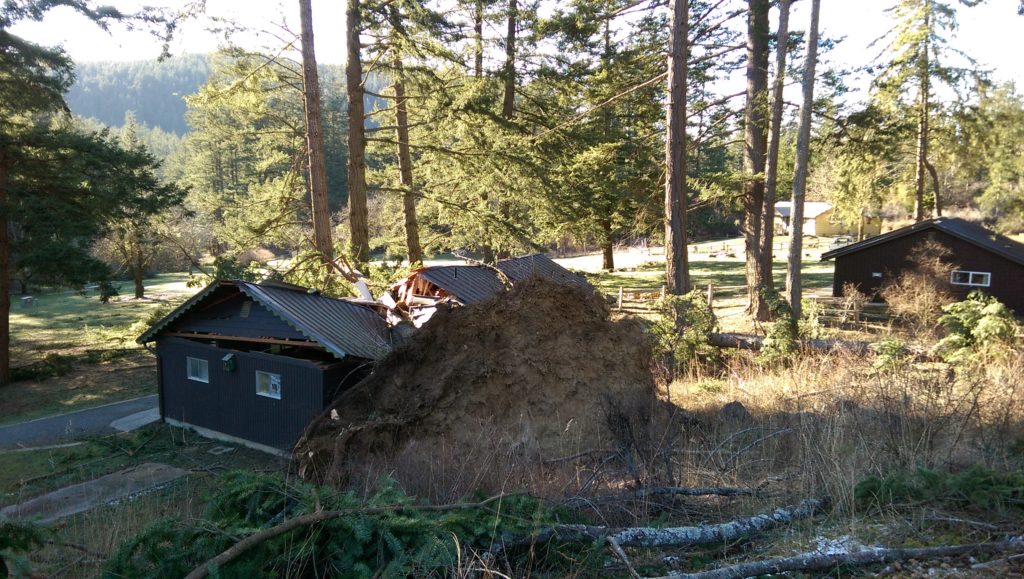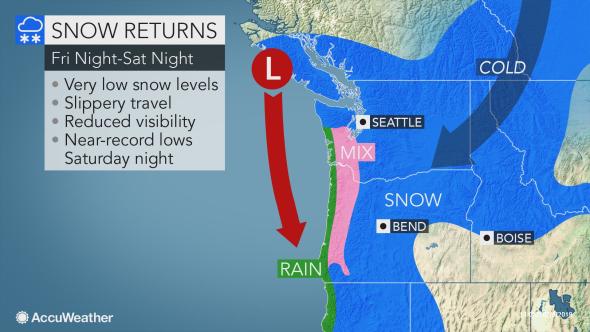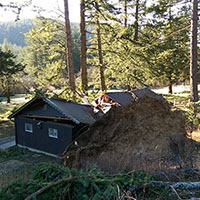— by Lin McNulty, Managing Editor —

Take a drive through Moran State Park on any given day and you may notice many downed trees strewn about the forest. Drive through yesterday or today and you will see at least the remnants of an estimated 25 trees that blew over and down during our recent Nor’easter, including the monstrous tree that was knocked over and into an unoccupied building at Camp Moran retreat center.
Yes, a Nor’easter is a storm along the East Coast of North America, so called because the winds over the coastal area are typically from the northeast. But our recent winds came blowing from the Fraser River on British Columbia, which is Northeast of us. So what would you call it, if not that?
Public Works verifies that 25 trees were across the roadway at Moran State Park and another 12 were strewn across roadways around the island. Crews continue work today in the park clearing debris.
National Weather Service records from Orcas airport indicate the highest wind gust of 26 mph registered on February 3 at 9:15 p.m. We know that’s not right. A reader commented to Orcas Issues that much of the night it sounded like a freight train on their roof.

Forecasts call for a new storm to develop off the coast of of the state on Friday. This storm may have a similar track and amount of cold air to the one earlier in the week. This could also bring similar snowfall amounts across the region.
**If you are reading theOrcasonian for free, thank your fellow islanders. If you would like to support theOrcasonian CLICK HERE to set your modestly-priced, voluntary subscription. Otherwise, no worries; we’re happy to share with you.**









Oh dear me check cliffmass weather blog, this next week could well be a major snow event starting but not ending Friday.
Certainly wind gust were MUCH higher than 26 mph! It may be time for some new, more accurate instruments to check wind gusts if we are going to use KORS as a weather model.
i am sad that mature and huge trees blew down – the el nino has saturated our soils. madronas stand the most danger of falling, due to the unseasonably mild, wet winter followed by a northeaster, plus their dense leaf canopy and brittle roots unused to so much saturation.
We are indeed experiencing more severe weather events, seems like, but in a broader context, it shouldn’t surprise us; for one example, we just had nor’easter winds uproot and topple a 150’ Doug fir at our place on Obstruction Pass. The exposed root ball tells us a lot about how this tree had adapted to local events: we see massive diffuse roots on the south side, anchoring the trunk against the force of frequent southerly winds – but when this latest nor’easter hit, our fir had not developed sufficient root support on the north side! Yikes!
And we’re constantly impressed at how our deeper-rooted Madronas, constantly battling firs for sunlight, have adapted by deeper rooting into mineral soil, and angling their scaly red trunks however upward, midst their straight conifer neighbors! If there’s sufficient drainage for the madrona roots, seems like they’ve adapted!
“So what would you call it, if not that?”
I’ve been living in the islands for over 41 years and have always heard them called “north-easters”!